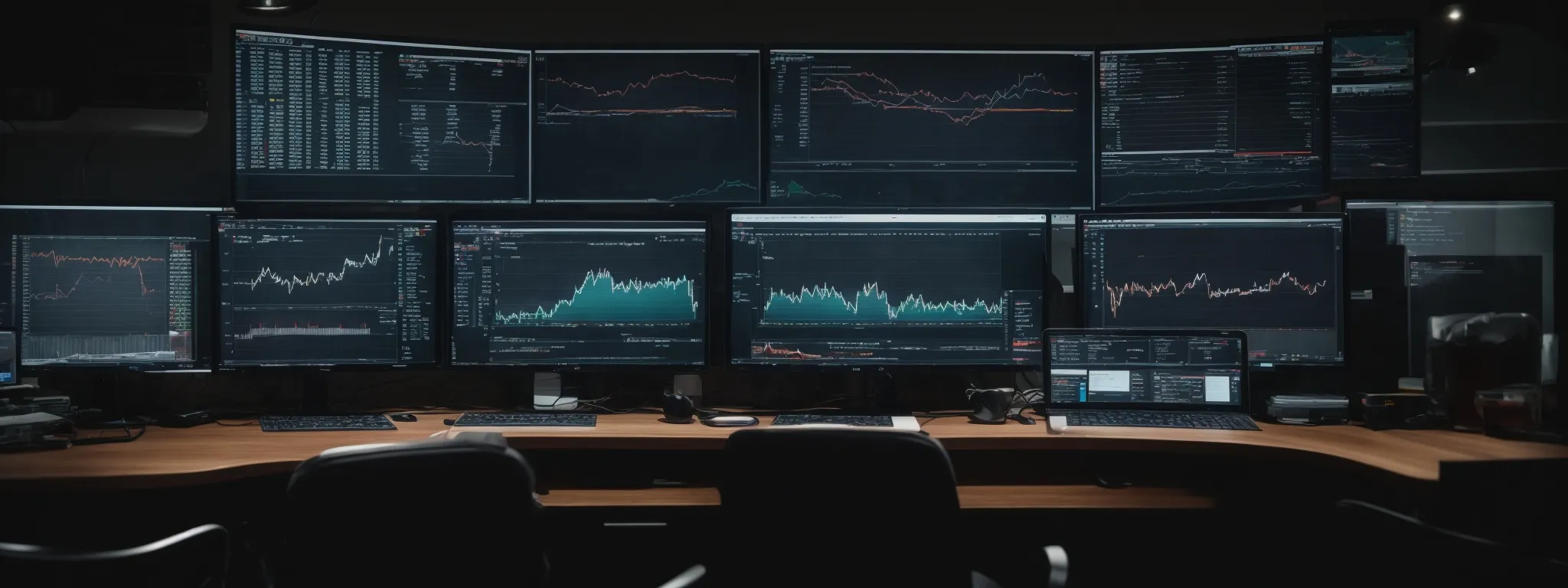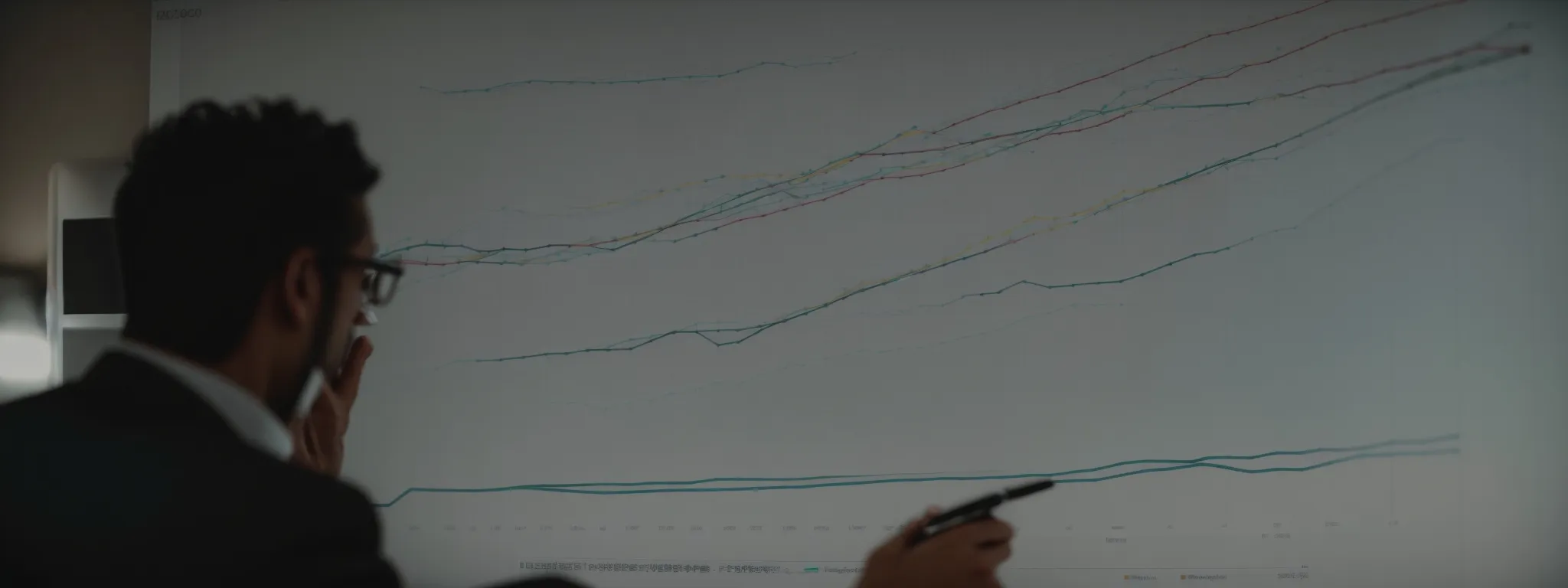SEO vs SEM: What Is the Difference
Understanding SEO vs SEM: The Key Differences and How They Impact Your Online Strategy In the ever-evolving landscape of digital marketing, the acronyms SEO and SEM often […]
Understanding SEO vs SEM: The Key Differences and How They Impact Your Online Strategy
In the ever-evolving landscape of digital marketing, the acronyms SEO and SEM often surface as cornerstones of a successful online strategy.
SEO, with its meticulous crafting of content to woo search engines, forms the bedrock of organic visibility, while SEM leverages the swiftness of paid advertising to catapult brands into the consumer spotlight.
Together, they orchestrate a harmony of tactics that can significantly amplify a company’s online presence and drive customer engagement.
Yet, distinguishing between the nuanced applications and impacts of Search Engine Optimization and Search Engine Marketing is essential for maximizing returns on investment and gaining a competitive edge.
Keep reading to demystify these pivotal approaches and how they can bolster your digital marketing endeavors.
Key Takeaways
- SEO Focuses on Organic Growth, While SEM Drives Quick Visibility Through Paid Ads
- LinkGraph’s SEO Services and SearchAtlas SEO Software Aid in Mastering Both SEO and SEM Strategies
- A Blended Approach of SEO and SEM Is Essential for Long-Term Digital Success and Immediate Market Impact
- Successful Online Strategies Require Precise Keyword Selection and a Balance of Content Optimization and Paid Advertisements
- Tracking and Analyzing SEO and SEM Metrics Is Critical for Measuring Success and Guiding Strategic Adjustments
Defining SEO and SEM Within Your Online Strategy

Dissecting the digital marketing landscape, two acronyms frequently emerge at the forefront: SEO and SEM.
While Search Engine Optimization (SEO) centers on Cultivating Organic Visibility and climbing the search engine results ladder, Search Engine Marketing (SEM) capitalizes on paid strategies to expand reach and visibility promptly.
Both SEO and SEM are essential, serving as the twin pillars upon which successful digital campaigns are built.
Optimizing a website with on-page SEO services or engaging in white label link building are just slices of the broader SEO efforts, while SEM encompasses the agility of PPC campaigns and the precision of targeted ad copy.
LinkGraph’s SEO services and SearchAtlas SEO software provide businesses with tools and expertise for navigating these complex territories effectively and efficiently, thus ensuring an integrated approach to enhance a company’s online presence.
SEO: Building Organic Visibility
In the realm of digital prominence, organic visibility stands as the bedrock for any enduring Search Engine Optimization strategy. LinkGraph’s SEO services excel in demystifying the nuances of search algorithms, Leveraging on-Page SEO services to finetune web pages, ensuring they resonate with searchers’ queries and adhere to search engine best practices for ranking.
Integral to securing a spot at the pinnacle of search engine results, white label link building emerges as a pivotal component. Through the meticulous cultivation of high-quality backlinks, SearchAtlas SEO software underscores the broad benefits of backlinks, propelling websites to heightened visibility and fostering trust with both search engines and internet users.
SEM: Leveraging Paid Advertising for Reach
Shifting the focus to SEM, the strategic deployment of paid advertising mechanisms becomes a catalyst for immediate visibility. Where SEO serves as a long-term investment in a brand’s digital real estate, SEM operates on the premise of accelerated presence: a rapid-fire solution to capture consumer attention and drive website traffic through search ads, shopping ads, and remarketing campaigns.
As a method of generating traffic and creating brand awareness, SEM aligns a company’s advertising campaign with internet users actively seeking related products or services. This alignment is illustrated through a higher conversion rate, underpinned by judiciously crafted ad copy and SEO-attuned landing pages that ensure each click moves potential buyers closer to the end goal of a conversion.
| Marketing Approach | Goals | Tools Used | Metrics for Success |
|---|---|---|---|
| SEO | Enhance organic visibility, build long-term web presence | LinkGraph’s SEO services, SearchAtlas SEO software | Organic traffic, SERP rankings, backlink profile strength |
| SEM | Immediate reach, increased traffic, brand recognition | PPC ads, search engine ad platforms (e.g., Google Ads) | CTR, conversion rate, quality score |
Dissecting the Differences: SEO vs SEM

In the intricate tapestry of online marketing, the distinction between Search Engine Optimization (SEO) and Search Engine Marketing (SEM) remains of paramount importance.
SEO is the art and science of optimizing a website to maximize organic traffic over time, characterized by a deep-rooted focus on robust SEO strategies that drive long-term growth.
Conversely, SEM is the fast-acting counterpart, an advertising powerhouse that injects a business directly into the consumer’s line of sight, thereby increasing traffic and visibility with immediacy.
Together, they comprise a complementary arsenal, each wielding unique influence over a brand’s digital footprint.
SEO Fuels Long-Term Growth
Within the expansive realm of SEO, the quest for long-term growth is a strategic marathon, not a sprint. LinkGraph’s SEO services foster a symbiotic relationship between a brand’s content and the evolving criteria search engines use to gauge relevance and authority.
This meticulous approach to SEO establishes a foundation of quality content, technical optimization, and a network of reputable backlinks: essential elements for climbing the ranks of search engine results over time.
- Developing an SEO content strategy tailored to the brand and target audience.
- Implementing on-page SEO services to optimize website structure and content.
- Executing white label link building efforts to earn authoritative backlinks and enhance domain authority.
SEM Boosts Short-Term Traffic
In the dynamic theater of Search Engine Marketing, immediacy is key. Companies wield SEM tactics, such as PPC ads and Bing Ads, to project their message directly in front of a targeted audience with compelling reasons to click, fostering quick surges in traffic and, potentially, conversion rates.
SEM serves as a powerful amplifier, a marketing channel capable of displaying a brand’s offering in real time to consumers engaged in pertinent search queries. It accentuates speed and specificity, attributes essential for businesses looking to make an immediate impact on their market and measure rapid success through uplift in search rank and search traffic.
How SEO and SEM Complement Each Other

The nexus of SEO and SEM represents a strategic confluence where businesses can synergize their efforts to achieve both short-term gains and long-term market dominance.
This intrinsic alliance between organic search optimization and aggressive search marketing enables a multifaceted approach, where enhancing brand visibility transcends beyond a singular channel.
By balancing these two pillars, companies can cast a wider net, capturing immediate interest with SEM while fostering enduring trust through SEO.
It’s this duality that allows a brand to be omnipresent throughout a consumer’s search journey, from initial awareness to final conversion.
Balancing Organic SEO With Aggressive SEM
Balancing the power of Organic SEO with the agility of Aggressive SEM represents the confluence of sustainable growth and instant visibility. LinkGraph’s SEO services champion a long-term organic approach that meticulously aligns with search engine algorithms, while their SEM prowess utilizes SearchAtlas SEO software to target ads for immediate impact on the market.
By deploying both strategies in tandem, businesses can secure a strategic advantage, ensuring they are not only highly visible in current search results but also building a solid foundation for continued online success. This dual strategy bridges the gap between obtaining quick wins through SEM and nurturing a robust online presence with SEO:
| Strategy | SEO Benefits | SEM Benefits |
|---|---|---|
| Long-Term Growth | Sustainable organic rank, credibility with backlink profiles | N/A |
| Immediate Visibility | N/A | Targeted reach, rapid traffic increase, quick conversion spikes |
Enhancing Brand Visibility Through Combined Efforts
When SEO and SEM are woven into a cohesive online strategy, the outcome is an enhanced brand visibility that leverages the strength of both short-term and long-term digital marketing goals. Through the strategic use of LinkGraph’s SEO services, brands can cultivate a strong organic presence, while the targeted SEM efforts like those enabled by SearchAtlas SEO software can quickly place products and services in the spotlight.
The integration of these methodologies allows a brand’s message to persistently resonate across the digital landscape, ensuring it captures both the passive browsers and the intentional buyers. LinkGraph’s blend of local SEO services, white label SEO solutions, and guest posting services work in harmony with precision-targeted SEM campaigns, culminating in a comprehensive approach that elevates a brand’s online profile to new heights.
Impact of SEO and SEM on Digital Marketing ROI

In a digital landscape where every marketing dollar counts, understanding the fiscal impact of Search Engine Optimization (SEO) and Search Engine Marketing (SEM) on a company’s digital marketing return on investment (ROI) becomes paramount.
The two strategies, although governed by the shared aim of elevating online presence, impart distinct financial implications: SEO lays the groundwork for long-term equity in digital assets, while SEM delivers a more instantaneous monetization of web traffic.
Businesses must unravel the complexities of calculating returns on the investment made in SEO endeavors and assess the immediate value derived from SEM activities to ensure a balanced, economical approach to achieving online marketing objectives.
Calculating Returns on SEO Investment
Evaluating the ROI of SEO can be complex, as dividends from optimizing a brand’s web presence predominantly emerge over an extended period. Firms invest in LinkGraph’s SEO services with an understanding that returns accumulate as search rankings improve, user engagement rises, and organic search traffic grows—components that constitute benchmarks for success in SEO investment.
LinkGraph’s capacity to integrate comprehensive ranking guides and SEO reporting metrics into their strategy allows businesses to track progress and gauge the effectiveness of their SEO campaigns. Direct returns manifest in enhanced brand reputation and incremental gains in customer acquisition costs, affirming the value of sustained, organic growth facilitated by Search Engine Optimization.
Assessing Immediate Value From SEM
When evaluating the impact of Search Engine Marketing, the lens through which immediate value is assessed often focuses on the rate at which paid strategies convert interest into tangible results. LinkGraph’s expertise in SEM, supported by tools such as SearchAtlas SEO software, allows for a detailed analysis of how paid search ads translate to increased website traffic and heightened conversion rates.
Metrics such as click-through rate (CTR), conversion rate, and quality score serve as direct indicators of an SEM campaign’s success, providing businesses with real-time feedback on their investment. These data points signal a campaign’s efficacy, guiding advertisers on where to optimize for improved performance:
- Analysis of click-through rates to determine ad relevance and engagement.
- Monitoring conversion rates to evaluate the end-to-end user journey and ad copy effectiveness.
- Assessing quality scores as a benchmark for ad position and cost-efficiency.
SEO and SEM Tactics for a Competitive Edge

Securing a competitive edge in the online realm hinges on an astute understanding and application of SEO and SEM tactics.
Navigating through the search landscape not only involves crafting an SEO strategy that yields sustainable organic growth, but it also requires the astute allocation of resources towards SEM to ensure immediate visibility and engagement.
This delicate balance is epitomized in the art of developing a potent keyword strategy and discerning the judicious use of content optimization versus strategic paid advertisements.
Through the expert guidance of LinkGraph’s SEO services and the SearchAtlas SEO software, businesses can construct a cohesive and powerful online narrative that aligns with both user intent and commercial goals.
Keyword Strategy for Maximum Impact
Mastering keyword strategy is imperative for both SEO and SEM, as it lays the groundwork for the content visibility and relevance in search results. By utilizing SearchAtlas SEO software, specialists can conduct thorough keyword research, identifying terms that align with searcher intent and have the potential to drive substantive traffic to a brand’s web pages. It is the precision of this process that distinguishes a competitive online strategy.
LinkGraph’s SEO services underscore the philosophy that a robust keyword strategy is not solely about volume but rather about precision and relevancy. They advocate that every selected keyword should mirror the specifics of consumer demand, thus ensuring that every facet of content, from blog posts to ad campaigns, reaches the intended target audience with clarity and purpose.
Content and Ads: When to Optimize vs. When to Pay
Deciphering when to optimize content organically or invest in paid advertisements is a nuanced decision integral to a company’s online strategy. Content optimization leverages SEO to build a strong organic presence over time, enhancing credibility and compound growth, whereas paid advertisements offer instant visibility and are particularly effective for timely promotions or competitive keyword spaces.
Assessing the optimal balance between the two depends on budget constraints, immediacy of goals, and competitive landscape. A business might lean on LinkGraph’s SEO services to improve organic search rankings gradually while using SearchAtlas SEO software to manage and optimize a simultaneously running SEM campaign for quicker results:
- Employ organic SEO tactics to cultivate evergreen content that consistently draws traffic.
- Allocate budget to SEM for immediate visibility in competitive niches or when launching time-sensitive campaigns.
Measuring Success in SEO vs SEM

In the terrain of digital marketing, the depth of a brand’s online success hinges on the ability to not only implement but also accurately measure the impact of SEO and SEM strategies.
Understanding the distinction between these approaches is only part of the equation—mastering the art of evaluation presents a further challenge.
The process of analyzing SEO performance metrics and Tracking SEM Campaign Refinements stands as a decisive factor in discerning the efficacy of each method.
Such critical assessments draw a line in the sand, identifying triumphs and areas in need of adjustment, thus underscoring their vital roles in shaping an online strategy that drives tangible business results.
Analyzing SEO Performance Metrics
Analyzing SEO performance metrics transcends beyond mere visualization of data; it delves into unearthing insights that dictate the success of on-page optimizations and content strategies. LinkGraph leverages advanced SEO AI writer and assessment tools to extract meaningful patterns from organic search traffic, conversion rate fluctuations, and user engagement levels, distilling these into actionable intelligence that informs further optimization efforts.
LinkGraph’s SEO services meticulously track a suite of SEO reporting metrics that capture the nuanced impacts of SEO efforts on a website’s search rank. Data gathered from free SEO audit tools and free backlink analysis informs specialists about the strengths and weaknesses of a site’s SEO profile, offering a comprehensive view of performance against predetermined objectives in organic search results.
Tracking and Refining SEM Campaigns
The success of Search Engine Marketing campaigns is intrinsically tied to the meticulous tracking of key performance indicators. Utilizing SearchAtlas SEO software, LinkGraph enables clients to monitor the intricacies of their SEM endeavors, fine-tuning campaigns for peak performance and ensuring that advertising spend yields optimal returns.
Crucial to refining SEM strategies is the continual analysis of campaign metrics, from ad impressions to click-through rates, which illuminates consumer response and interaction with ads. LinkGraph distinguishes itself in the field by not only providing granular data for in-depth SEM campaign evaluation but also by applying this insight to adjust bidding strategies, ensuring clients’ messages resonate more effectively with their target audience.
Conclusion
Understanding the key differences between SEO and SEM is crucial for any online strategy.
SEO is the art of optimizing a website to improve organic visibility and foster long-term growth.
It involves creating quality content, enhancing user experience, and building a robust backlink profile.
SEM, on the other hand, focuses on gaining immediate visibility and traffic through paid advertising campaigns, such as PPC.
Both strategies serve distinct but complementary roles in a comprehensive digital marketing plan.
SEO is a strategic investment in a website’s long-term success, contributing to sustainable organic rankings and credibility.
SEM offers a quick and targeted approach to reach potential customers, suitable for immediate results and conversions.
Balancing SEO and SEM allows businesses to harness the benefits of steady organic growth while capitalizing on the speed and specificity of paid ads for immediate market impact.
Deploying these strategies in tandem not only secures a competitive advantage but also ensures a business’s presence across various stages of the consumer’s search journey.
Measuring the effectiveness of SEO and SEM is integral to this balance.
By analyzing key performance metrics—like traffic, rankings, and conversion rates for SEO, and click-through rates, conversion rates, and quality scores for SEM—businesses can adjust their strategies for maximum impact.
In summary, a deep understanding and application of both SEO and SEM tactics will significantly enhance a brand’s online strategy, presence, and overall return on investment.















































































